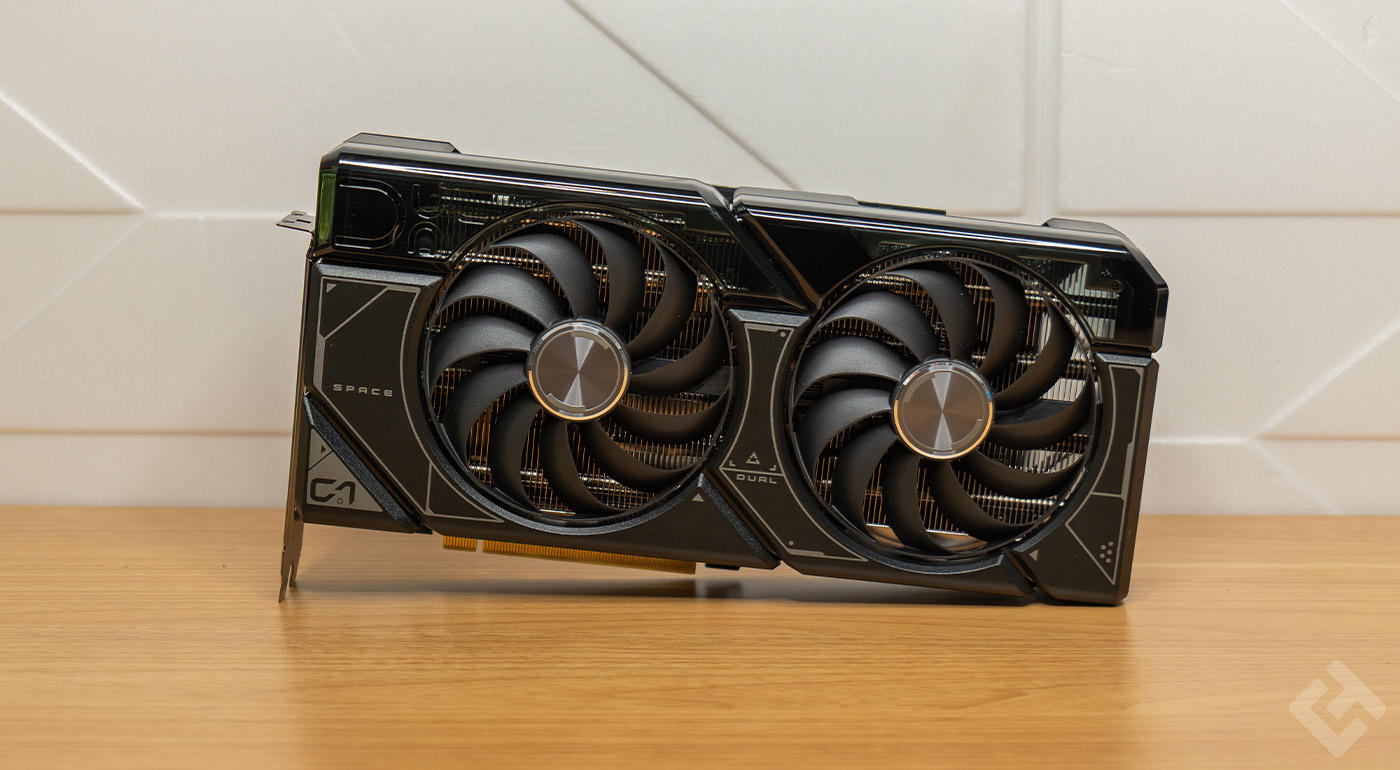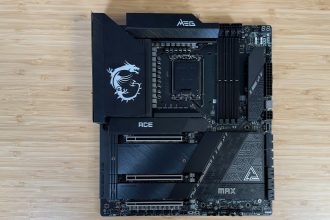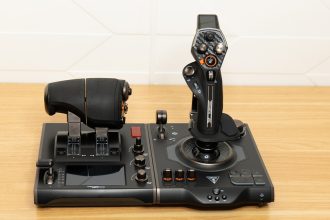The Asus Dual GeForce RTX 4070 Super is a mid-range graphics card offering very decent performance, but at a decent, contained price. Nvidia has made a point of offering an affordable graphics card with this model, without falling into the much higher prices of the RTX 4080 Super or even RTX 4070 Ti Super. So let’s see what this card has up its sleeve, and what performance it offers.
Design of the Asus Dual RTX 4070 Super
The Asus Dual RTX 4070 Super is a high-performance graphics card, but not too expensive, and above all, not too big. Indeed, in a world where cards like the RTX 4080 Super (ROG Strix version ) are excessively heavy and imposing, this Dual version is more compact, and that’s clearly not a bad thing!

Like all cards, it’s fairly classic, however, and there are no special effects or gimmicks here. Asus has placed two fans underneath the card, or on the front panel when it’s placed vertically. The card is a “Dual” version, so two fans make perfect sense. These two fans have 11 blades each, with a small arc effect, for optimum ventilation. This is also what you’ll find on the MSI GeForce RTX 4070 Ti Suprim, or other cards from various manufacturers.
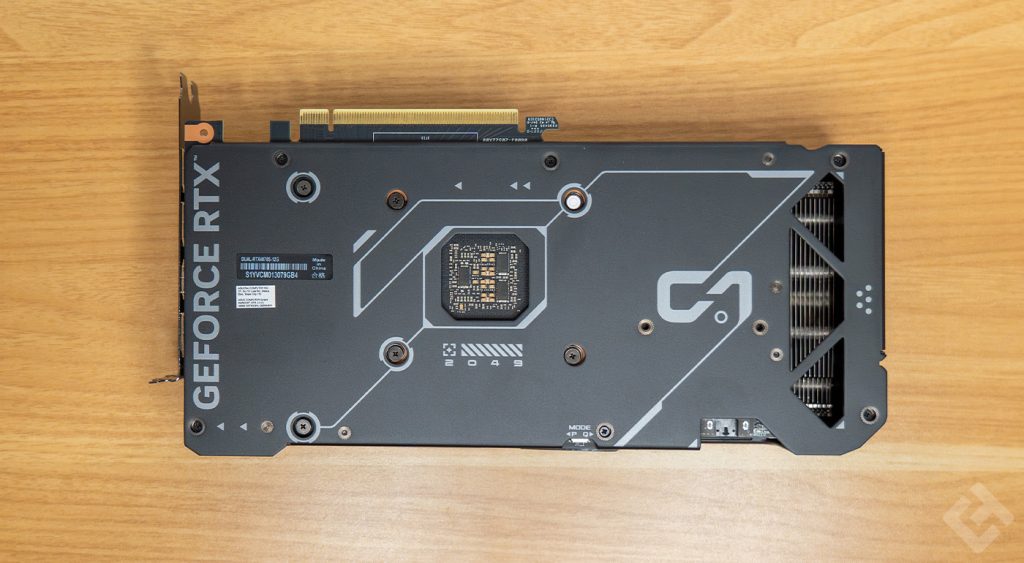
The Dual RTX 4070 Super also features a number of aesthetically pleasing graphic elements, which the user is free to decide whether or not he or she finds attractive. These are mainly located on the underside of the card, around the fans, as well as on the backplate on the other side. After all, this board comes with a pre-installed backplate. This is now a fairly standard feature on all graphics cards, and I’m tempted to say, all the better. It’s not very expensive, and at today’s card prices, you can get a backplate for an extra 5€.
The backplate is quite pretty here, still a little worked, with space and perforations where the PCB ends. The idea is to let the air flow through without holding it back. Firstly, it wouldn’t do any good, and secondly, this small opening facilitates ventilation of the board. As always, every Nvidia backplate is marked “GEFORCE RTX”.
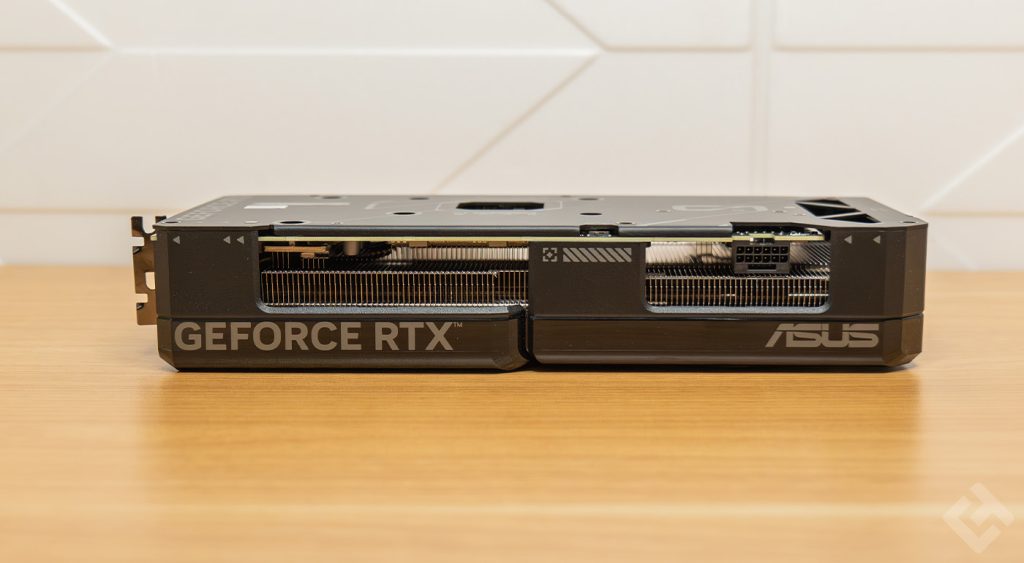
On the outer edge of the Asus Dual RTX 4070 Super, a heat pipe can be seen, along with the Asus logo and the ever-present “GEFORCE RTX” logo. The latter, I believe, is compulsory on all Nvidia chip cards.
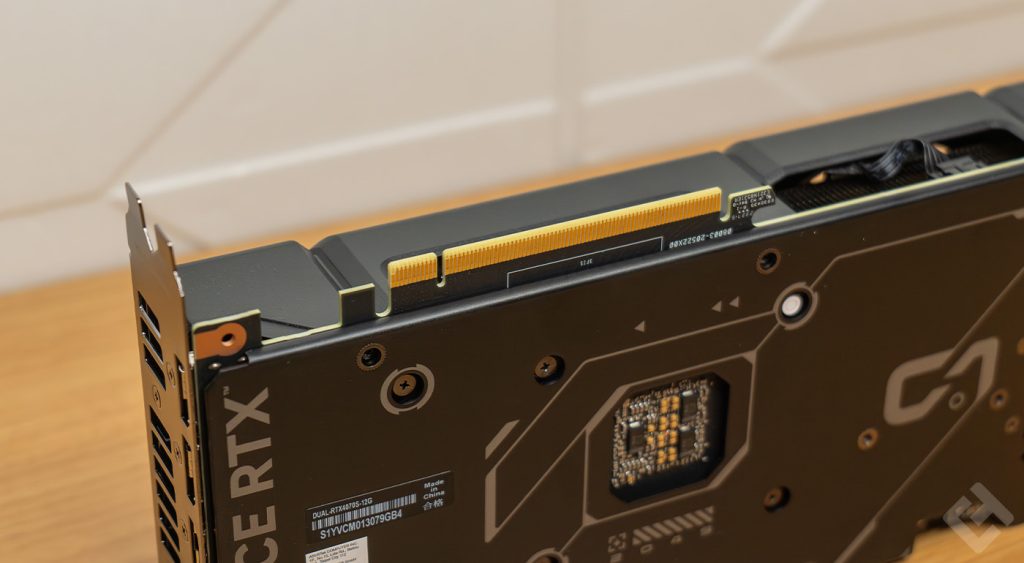
On the other side of the card, you can also see the heatpipes, as well as the card’s PCIe connectors and part of the heat sink. The black elements here are made of plastic; there are no more metal parts on this board than are strictly necessary. At the same time, this makes it lighter – even aluminum would undoubtedly have been heavier.
The board’s connectivity is pretty straightforward here: it’s an ATX 3.0 connector that requires three PCI connections from a power supply, or direct connection to the 600W ATX 3.0 port. In this case, Asus, like all other manufacturers, supplies the small adapter that goes with it. However, if you use a cable to power the card directly from the new PCIe 5 slot, it’s more attractive in terms of space and cable management.
Aesthetically, this Asus Dual GeForce RTX 4070 Super is simple, with no extravagance, but do we really need it? I’m not so sure, certainly, the look doesn’t resemble that of its big sister, the RTX 4070 Ti Super version of the ROG Strix, but it’s okay to play the simplicity card sometimes, and that’s no bad thing.
Asus Dual RTX 4070 Super specifications
| Model | Asus Dual GeForce RTX 4070 Super |
| Graphics processor | Nvidia GeForce RTX 4070 Super |
| Standard bus | PCI Express 4.0 8x |
| CUDA cores | 7168 |
| Memory | GDDR6X |
| Number of memory GB | 8 GB |
| Memory bus | 192-bit |
| Base chipset frequency | 2520 MHz |
| OC frequency | 2550 MHz |
| Number of monitors supported | 4 |
| Multi GPU | No |
| Maximum digital resolution | 7680 x 4320 @ 60 Hz |
| HDCP process support | 2.3 |
| Power consumption | 220 Watts |
| Recommended power supply | 750 Watts |
| Power connector | 8 pins (x3) / ATX 3.0 |
| Connectors | 3 x DisplayPort 1.4a 1 x HDMI 2.1a |
| Virtual reality | Yes |
| Direct X | 12 Ultimate |
| Open GL | 4.6 |
| Dimensions | 267 x 134 x 51 mm |
| Ray Tracing support | Yes |
Graphics performance
At the time of writing, the Asus Dual GeForce RTX 4070 Super is the most “entry-level” card in the “Super” range on the 4000 series. I don’t know if a Super series is expected on the lower version cards, namely the 4060 and 4060 Ti, but it doesn’t look like it. So this card improves performance a little over the old version, the classic RTX 4070.
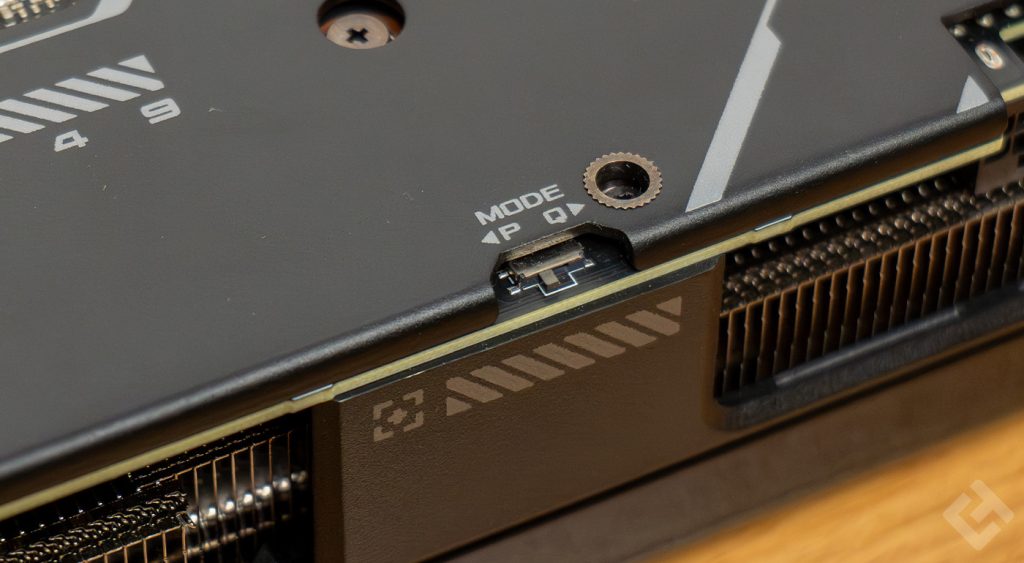
In fact, it features 7168 CUDA cores, compared with 5888 for the previous version, a significant increase in performance. Here, the improvement is indeed significant, but some data remain unchanged. Such is the case with the amount of VRAM, which remains at 12 GB GDDR6X, so there’s no need to make any major changes here. But there’s also a 192-bit memory bus, also unchanged from the previous generation.
It should be noted, however, that on the RTX 3060 Ti, the memory bus was 256 bits, so this reduction compared to a lower-performance card of the previous generation is rather incomprehensible, but Nvidia has played its cards right and, fortunately, everything is faster. DLSS 3 is also included, offering excellent gaming performance, and the difference between the RTX 4070 Super’s performance with and without DLSS 3 is like night and day. However, DLSS 3 is not available on all games, but the card does just as well without it.
Before we take a look at the beast’s actual performance, here’s the configuration I used to test the Asus Dual GeForce RTX 4070 Super :
- Motherboard: MSI MPG Z790 Carbon Max WiFi
- Processor: Intel Core i9 13900K
- RAM: 2 x 16 GB Corsair Dominator Titanium
- Case: Corsair 6500X
- Power supply: Corsair RM1000x Shift
This configuration is sufficient to run all conceivable games in Full HD without a hitch, although 4K is a different story. But the RTX 4070 Super is not a card optimized for 4K Ultra HD, it’s rather an excellent Full HD card or a very good Quad HD card (2560 x 1440), which is enough for most users.
We’re not asking it to run 4K games at 240 Hz either, but 1440p games at 144 or 240 Hz, I’d definitely say yes, and here’s what it does in my performance test.
What you notice straight away in the performance tests is an improvement in performance compared with the RTX 4070, particularly the Zotac RTX 4070. Depending on the benchmark used, the performance gain is more or less significant, but the card remains systematically superior, and that’s the main thing to remember. In some cases, performance is somewhat similar to that of an RTX 4070 Ti, but not to the Super version, and not to the card’s actual level.
As far as DLSS is concerned, the 4070 Super titillates the classic 4070 Ti in DLSS 2 at 1440p resolution, while in DLSS 3 4K, it’s the same story, with some cards lagging behind the Asus Dual RTX 4070 Super, but never equaling or surpassing it.
Gaming performance
To test this graphics card to perfection, I equipped myself with a 4K display at 144 Hz, to take full advantage of the card’s performance. However, as I’ve written before, this card isn’t designed for 4K gaming – ideally, 1440p. However, for the test to run smoothly, I need to try out all the necessary definitions, including 4K Ultra HD.
You can, however, make do with a 1440p screen, which will bring more fluidity. Especially as a 4K slab at 144 Hz is horrendously expensive, it would clearly be a shame to have to reduce gameplay quality on a screen you’d paid a fortune for, just to be able to use a graphics card properly. But without further ado, here are the benchmarks for this Asus Dual GeForce RTX 4070 Super, which does wonderfully well.
Frankly, this RTX 4070 Super is a nice surprise, with convincing performance. Let’s take a closer look at the results for each game.
Cyberpunk 2077
On Cyberpunk 2077, as you’d expect, the card has a bit of trouble in 4K Ultra HD, with a minimum of just 37 fps. In fact, it’s very poor compared with the other cards we tested, but after running the benchmark several times, this is the value that almost always came out on top. However, we’re still able to enjoy a minimum of 150 fps in Full HD, which is fully convincing.
F1 2022
On F1 2022, the Asus Dual GeForce RTX 4070 Super also performed well, with a minimum of 150 fps in 4K Ultra HD, and a maximum of over 500 fps in Full HD. On F1 2022, no matter which definition you opt for, the image quality will always be ultra-fluid and of very high quality, which is one of the advantages of this game that takes advantage of DLSS, offering very good performance here too.
Shadow of the Tomb Raider
With a minimum of 182 fps on Shadow of the Tomb Raider, the Asus RTX 4070 Super does well, but the difference between the minimum and maximum number of frames per second is quite significant. However, it’s a card that’s perfect for playing at 1440p, with an average of around 200 fps, which is still very decent. Even so, 4K performance is decent, but not good enough to play with this definition.
Temperatures and power consumption
The card isn’t very big, so we can expect it to heat up somewhat, given the presence of just 2 fans. But don’t speak too soon before you’ve tested it, because it’s far from what you’d expect. During my benchmarks, the temperature remained ultra-controlled for a GPU with only two fans, which is to be congratulated.
| Average IDLE temperature | Average max load temperature |
| 38°C | 63,5°C |
Frankly, a card like this that heats up so little, especially in a poorly ventilated case, because my fans don’t turn very fast, I haven’t finished the whole configuration yet before putting my new PC back in … This is to be applauded!
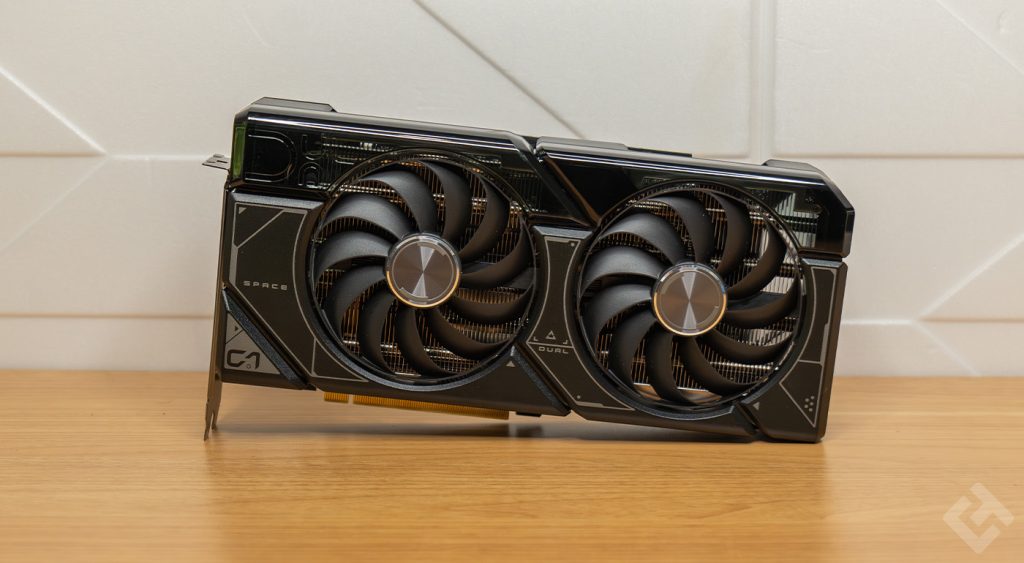
As for power consumption, Asus recommends a minimum power supply of 750 watts. Even 650 watts may be enough, but Asus recommends more for a very good reason: the card’s frequency in boosted mode is increased by 2% compared with the basic Nvidia version. The boosted frequency increases from 2475 MHz to 2520 MHz.
A good 80 Plus Gold power supply is also recommended, as I don’t know of any 80 Plus Gold power supplies with 650 W of power. Or, at the price, it’s probably better to go for a 750-watt 80 Plus Bronze indeed. Here’s the card’s power consumption, which is excellent.
| Average consumption IDLE | Max consumption max load |
| 9,5 W | 220 W |
IDLE power consumption, i.e. when the PC is at rest and not putting a lot of load on the GPU, is an excellent 9.5 watts, and the maximum power consumption at full load is 220 watts, which is still correct, but also fully in line with the value announced by the manufacturer – a first, I believe, in my graphics card tests.
Dual RTX 4070 Super connectivity
The Asus Dual GeForce RTX 4070 Super is fairly classic in terms of connectivity. It connects via PCIe 4 or 5, although it is compatible with older versions of PCI. However, there’s a risk that the latter’s performance will be somewhat limited with a PCIe 3 connection.
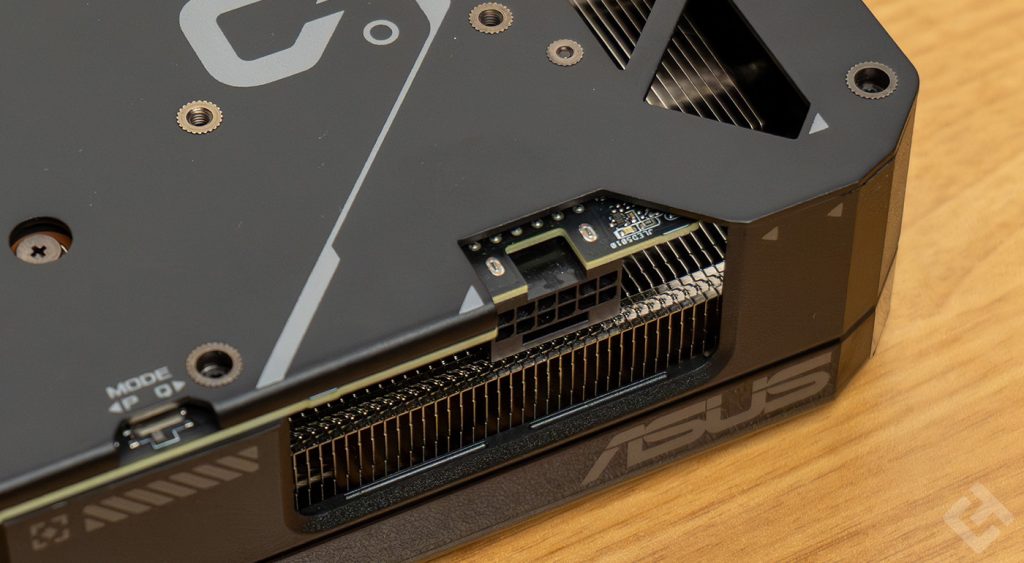
As for direct motherboard connectivity, there’s nothing out of the ordinary. As for the power supply, this board, like many others, is equipped with a 600W connector compliant with PCIe 5 / ATX 3.0 specifications, and can be powered directly via a cable coming out of this power supply connector.
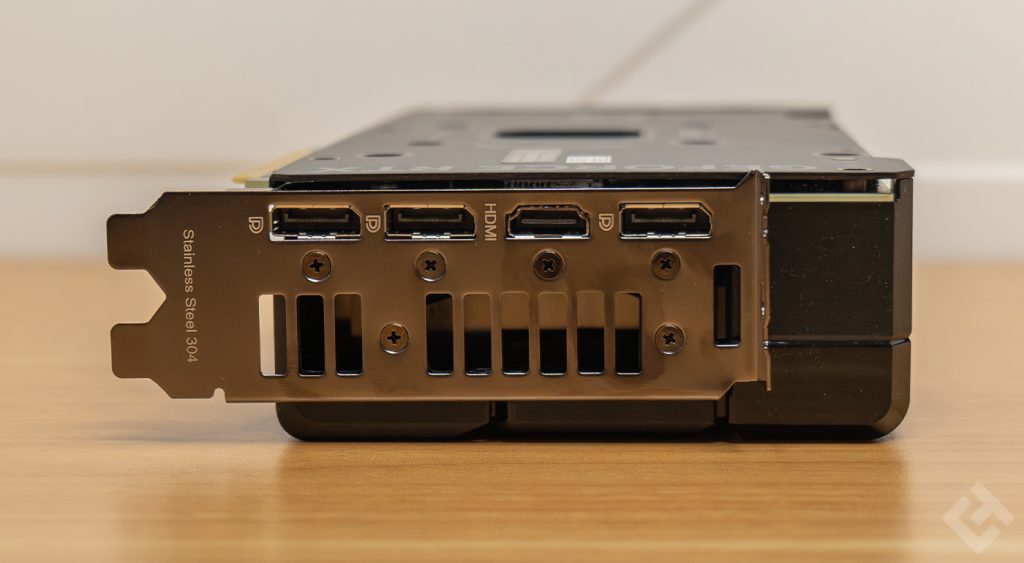
If you don’t have a connector of this type on your power supply, then you’ll have to opt for the connector supplied with the card and the three PCIe cables from your power supply, to be plugged into it. It’s a bit disturbing, I find, in terms of aesthetics, but it’s the only solution if you don’t have a modern power supply.
Asus Dual GeForce RTX 4070 Super : Reviews
The Asus Dual GeForce RTX 4070 Super is a high-performance card that has two advantages: it offers decent performance at a rather affordable price, and it’s just about compact in size, in a world where graphics cards have become monsters of exponential dimensions to the limit!


